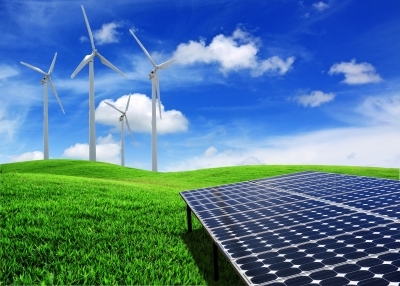 21 November 2014 – A low-cost battery that converts heat into electricity may help reduce obstacles to generating power in remote areas of developing countries.
21 November 2014 – A low-cost battery that converts heat into electricity may help reduce obstacles to generating power in remote areas of developing countries.
A lot of heat is produced by industrial processes and electric power plants. Scientists have been able to harness some of this ‘wasted’ heat for decades. But many of such thermally regenerative electrochemical cycle (TREC), or thermoelectric, systems are expensive, use dangerous or polluting materials or generate power only at high temperatures.
One existing TREC system that does work at lower temperatures also requires external electricity for charging, meaning it cannot work in remote areas of developing countries that are off the power grid. The required electricity also adds to the cost.
“The greatest challenge for the adoption of thermoelectric [systems] for developing world applications is system cost,” says Robert Stevens, a mechanical engineer at the Rochester Institute of Technology in the United States. “Currently, system costs are in excess of US$5 per Watt of electrical power and can be substantially larger for small systems.”
But now a US-based team has created a battery that may bring TREC systems closer to use in developing countries.
It is constructed of safe, inexpensive materials, generates electricity at temperatures below 100 degrees Celsius and requires no external electricity. The active chemicals in the battery are Prussian blue nanoparticles and potassium ferrocyanide, write the researchers in a paper published in the Proceedings of the National Academy of Sciences this week (17 November).
Thermal energy can be found nearly anywhere, yet there are many places without electricity grids, Yuan Yang, a study author and postdoctorate researcher in mechanical engineering at the Massachusetts Institute of Technology (MIT), United States, tells SciDev.Net.
First, waste heat is used to heat up an uncharged battery, initially at room temperature. When the battery is at around 60 degrees Celsius, the cell is allowed to cool – while discharging energy. At lower temperatures, the battery discharges more energy than is used to charge it, thus converting heat to electricity.
After the discharge, the battery returns to its original condition – so it continuously regenerates. “The battery always discharges and it needs no external electrical energy,” says Yang.
Thermoelectric systems are often considered superior to other energy generation or storage technologies because they are “modular, have no moving parts, are scalable from milliwatts to hundreds of watts and can operate over a range and varying temperature differences,” says Stevens.
Adapting this technology to developing-country uses will require batteries to be built that can endure repeated heating and cooling and yet still be affordable, he says.
Yang says the current work on the new battery is just a proof that the concept can work, and more research is required before it can be considered a viable energy source.
“We need to work more on finding better materials to improve the efficiency and also the power,” he says.
*Paula Park – SciDev.net



